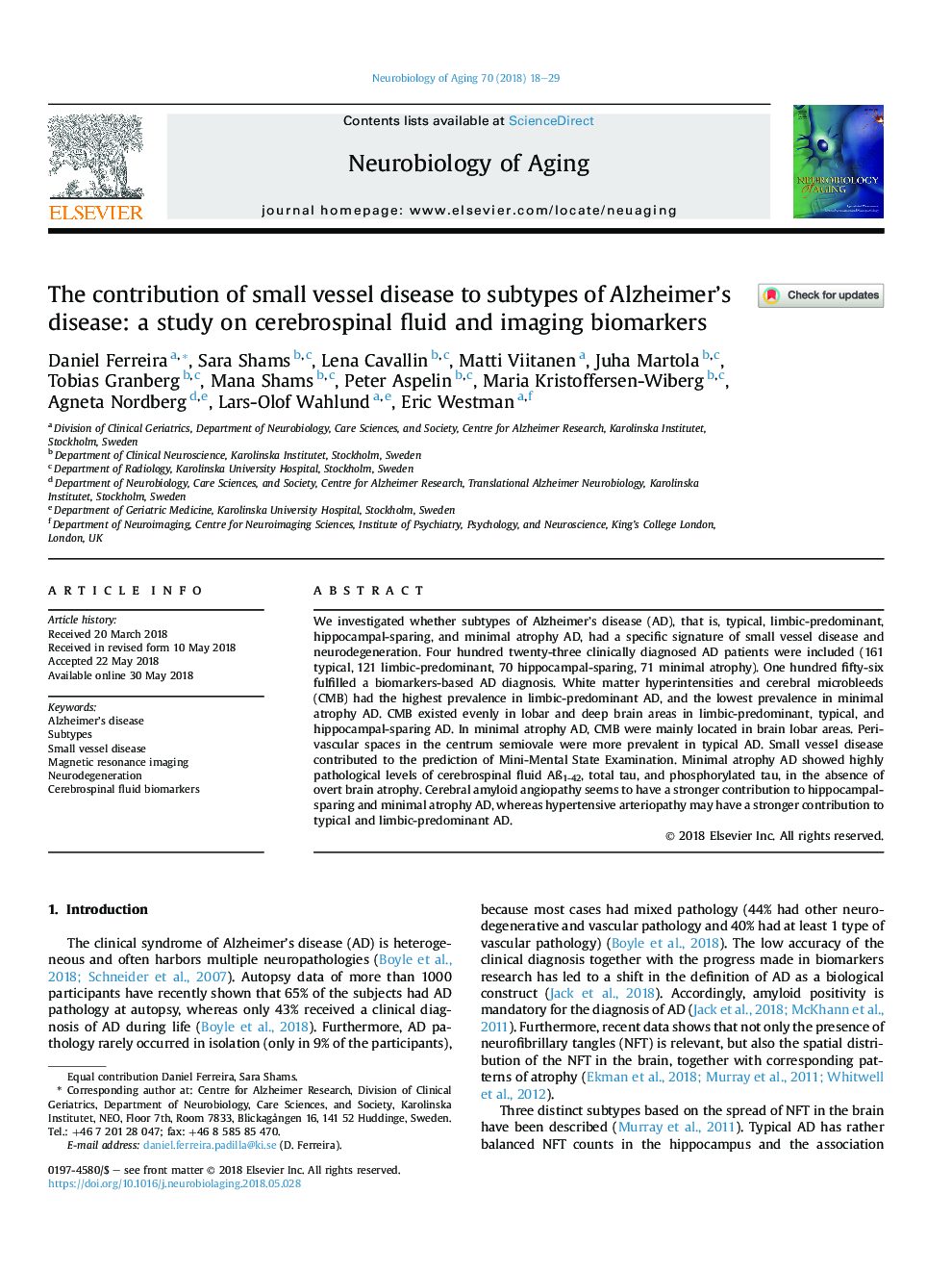| Article ID | Journal | Published Year | Pages | File Type |
|---|---|---|---|---|
| 6802804 | Neurobiology of Aging | 2018 | 12 Pages |
Abstract
We investigated whether subtypes of Alzheimer's disease (AD), that is, typical, limbic-predominant, hippocampal-sparing, and minimal atrophy AD, had a specific signature of small vessel disease and neurodegeneration. Four hundred twenty-three clinically diagnosed AD patients were included (161 typical, 121 limbic-predominant, 70 hippocampal-sparing, 71 minimal atrophy). One hundred fifty-six fulfilled a biomarkers-based AD diagnosis. White matter hyperintensities and cerebral microbleeds (CMB) had the highest prevalence in limbic-predominant AD, and the lowest prevalence in minimal atrophy AD. CMB existed evenly in lobar and deep brain areas in limbic-predominant, typical, and hippocampal-sparing AD. In minimal atrophy AD, CMB were mainly located in brain lobar areas. Perivascular spaces in the centrum semiovale were more prevalent in typical AD. Small vessel disease contributed to the prediction of Mini-Mental State Examination. Minimal atrophy AD showed highly pathological levels of cerebrospinal fluid AÃ1-42, total tau, and phosphorylated tau, in the absence of overt brain atrophy. Cerebral amyloid angiopathy seems to have a stronger contribution to hippocampal-sparing and minimal atrophy AD, whereas hypertensive arteriopathy may have a stronger contribution to typical and limbic-predominant AD.
Keywords
Related Topics
Life Sciences
Biochemistry, Genetics and Molecular Biology
Ageing
Authors
Daniel Ferreira, Sara Shams, Lena Cavallin, Matti Viitanen, Juha Martola, Tobias Granberg, Mana Shams, Peter Aspelin, Maria Kristoffersen-Wiberg, Agneta Nordberg, Lars-Olof Wahlund, Eric Westman,
